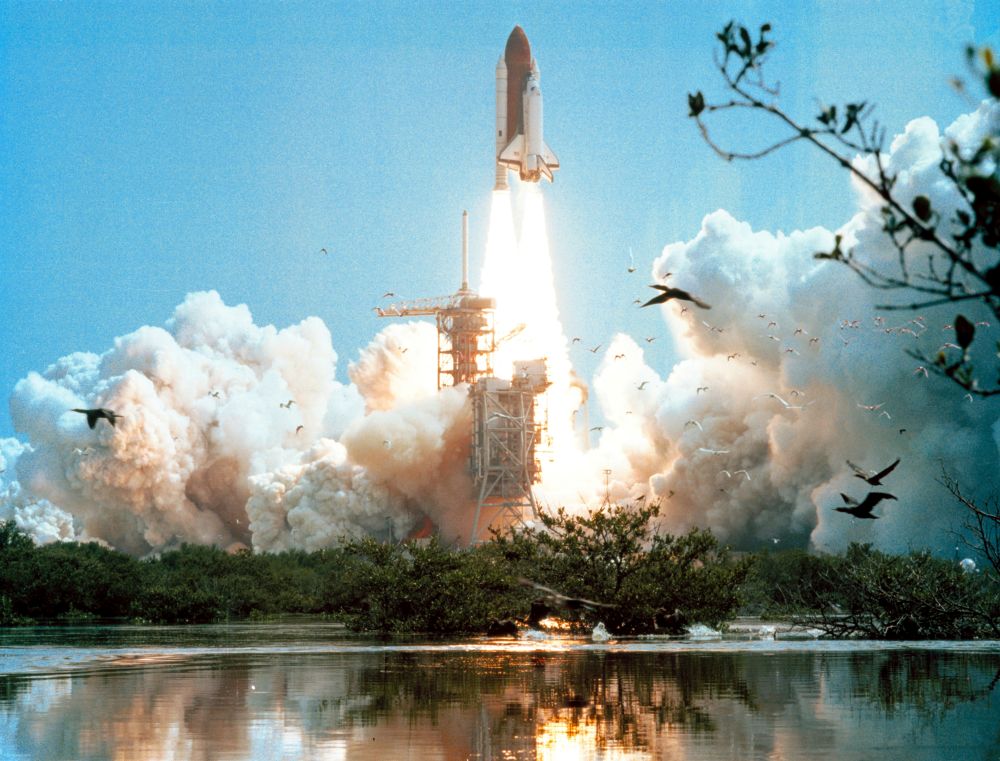Should I be concerned about living near a Spacecraft Launch area?

With the advent of private companies like SpaceX being able to send people and objects into space, launches all over the world have increased dramatically in the last few years. The average number of space launches between 2008–17 was 82 per year (3.4 percent average annual growth rate) versus an average 133 launches per year between 2018–22 (14.6 percent average annual growth rate). (U.S. Private Space Launch Industry is Out of this World) In 2024, a record 259 rockets were launched into space, burning through more than 153,000 tonnes of propellant. However, the total carbon dioxide and soot released by rockets is still small compared with aviation or heavy industry. (Should we be monitoring rocket and satellite impacts on air quality?) Hmmm…how do rocket launch emissions compare to regular car emissions?
There’s a lot of variability with regards to rocket launch emissions. The actual amount of emissions from a rocket launch can vary depending on a number of factors, such as the type of rocket, the amount of fuel used, and the weather conditions at the launch site. The amount of fuel used also varies according to the payload: During the 2008-2022 period, most launches used medium-lift rockets (capable of lifting 4,400-44,000 lbs). Medium-lift rockets accounted for an increasingly large share in recent years, followed by small-lift (<4,400 lbs), heavy-lift (44,000-110,000 lbs), and super heavy-lift (>110,000 lbs) rockets. The public sector drives demand for the heavy- and super heavy-lift space launch services; however, the private sector drives demand for the small- and medium-lift sectors.
The Space Launch System (SLS) rocket is one of the most powerful rockets in the world, and its launch produces a significant amount of greenhouse gas emissions. According to a study by the University of Strathclyde, the Artemis 1 mission, which was an unmanned lunar flight test that lasted just over 25 days in 2022, was estimated to emit around 116 tonnes of carbon dioxide (CO2) into the atmosphere. This is equivalent to the emissions of around 100 cars driven at normal use for a year. However, to get a complete picture, you also have the emissions from the manufacture of these different types of fuels, the manufacture of the rocket and spaceship bodies themselves (for a sample rocket, manufacture would produce about 194,000 tons of carbon emissions, equivalent to the emissions from about 45,000 cars in normal use annually), and the emissions from rocket transportation (from the manufacturing site to the launchpad) and storage. For example, the NASA Crawler, a colossal vehicle used to transport space shuttles and rockets from the Vehicle Assembly Building to the launch pad at Kennedy Space Center, uses 1 gallon of fuel for 32 feet of movement, meaning 165 gallons per mile! (WHAT ARE THE ENVIRONMENTAL IMPACTS OF ROCKET INDUSTRY AND HOW CAN THEY BE MITIGATED FOR SUSTAINABLE SPACE EXPLORATION?) These numbers of emissions seem huge, but compared to emissions of cars, trucks and airplanes, apparently they don’t amount to much–in the lower atmosphere..
But what about fuel emissions and satellites and rockets that are decommissioned and burn in the upper atmosphere? The main source of emissions from the SLS launch is the solid rocket boosters, which use a fuel called ammonium perchlorate. This fuel burns at a very high temperature, producing large amounts of CO2, as well as metal oxides and chlorine compounds. In addition, ash from reentering satellites also accumulates high above Earth. Most of a satellite's mass burns up between altitudes of 37 miles and 50 miles (60 to 80 kilometers), according to Minkwan Kim, associate professor of astronautics at the University of Southampton in the U.K. "If we put the small particles at a very high altitude, they're going to stay there a very long time," Kim told Space.com. "Probably 100 years, 200 years." He believes that controlling the trajectory of re-entering components can make them burn at lower altitudes, which will cause metal oxides fall to the earth, instead of being suspended above the earth where they could could produce significant temperature anomalies through the destruction of ozone, or interfere with the Earth’s magnetic field. Scientists do not have a clear picture of how space emissions and space junk is affecting the planet. (Pollution from rocket launches and burning satellites could cause the next environmental emergency) Due to the growing “constellations” of satellite networks that we depend on for private and government communications, the pollution from launching and retiring satellites is going to increase. Is it better to have this pollution in the lower atmosphere or higher up?
Back to our initial question, scientists say that air quality around spacecraft launch sites (most are in Florida, with a few in California, Texas, New Mexico and Virginia) is not any worse than other areas. So, apparently purchasing a home near Cape Canaveral could be entertaining and healthy for viewing spacecraft being launched. On this very informative webpage, you can watch a virtual rocket launch through the atmospheric layers, to see that space launch emissions pale compared to airplane traffic emissions for the cause of lower atmospheric pollution. That’s why we strongly warn about where you choose to live in respect to location near a major airport. If you’re concerned with the effects of spacecraft emissions globally, however (as we should be), it’s a more complicated picture that mimics laws on the high seas: the company that launches a spacecraft owns it, and only its domestic laws apply, so that there is very little international legislation. (Pollution from rocket launches and burning satellites could cause the next environmental emergency) Our quest for better communication and information about space and other planets has costs…we just don’t yet know what they are.






